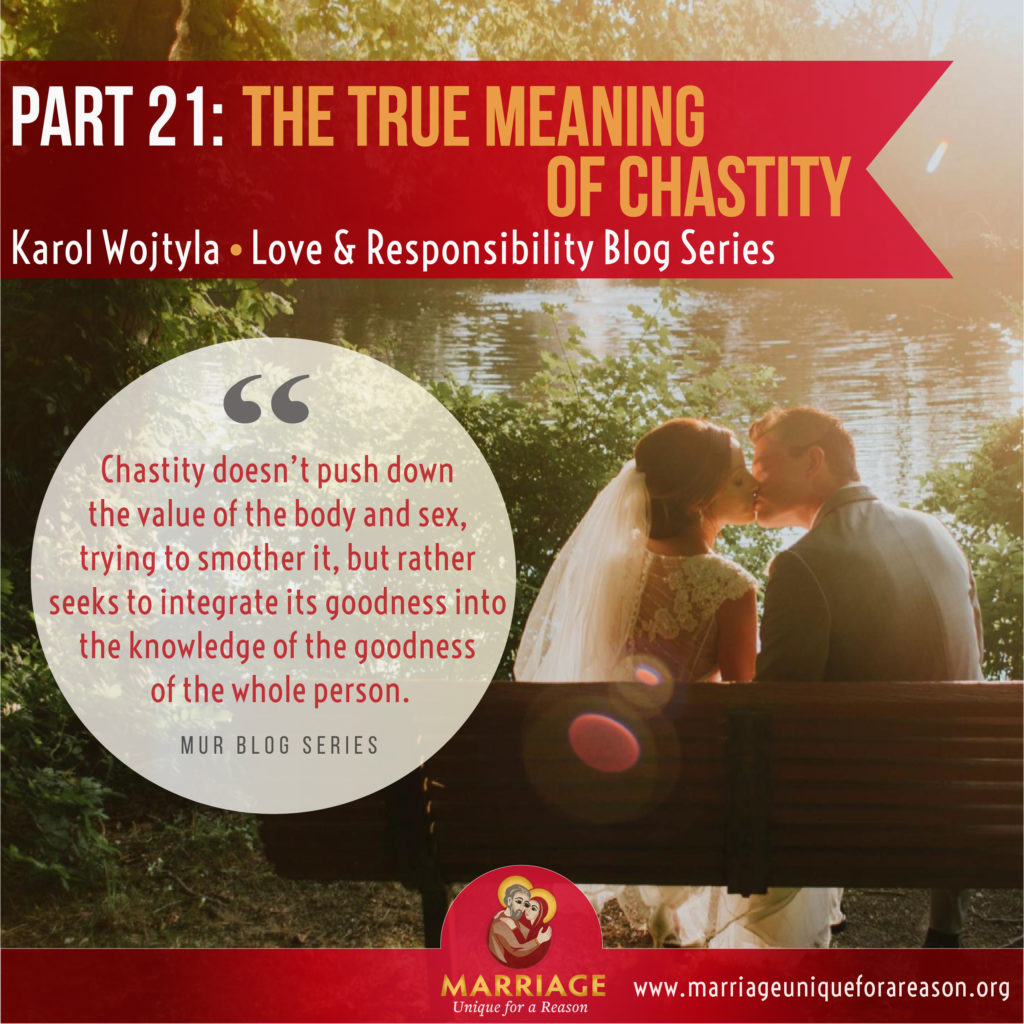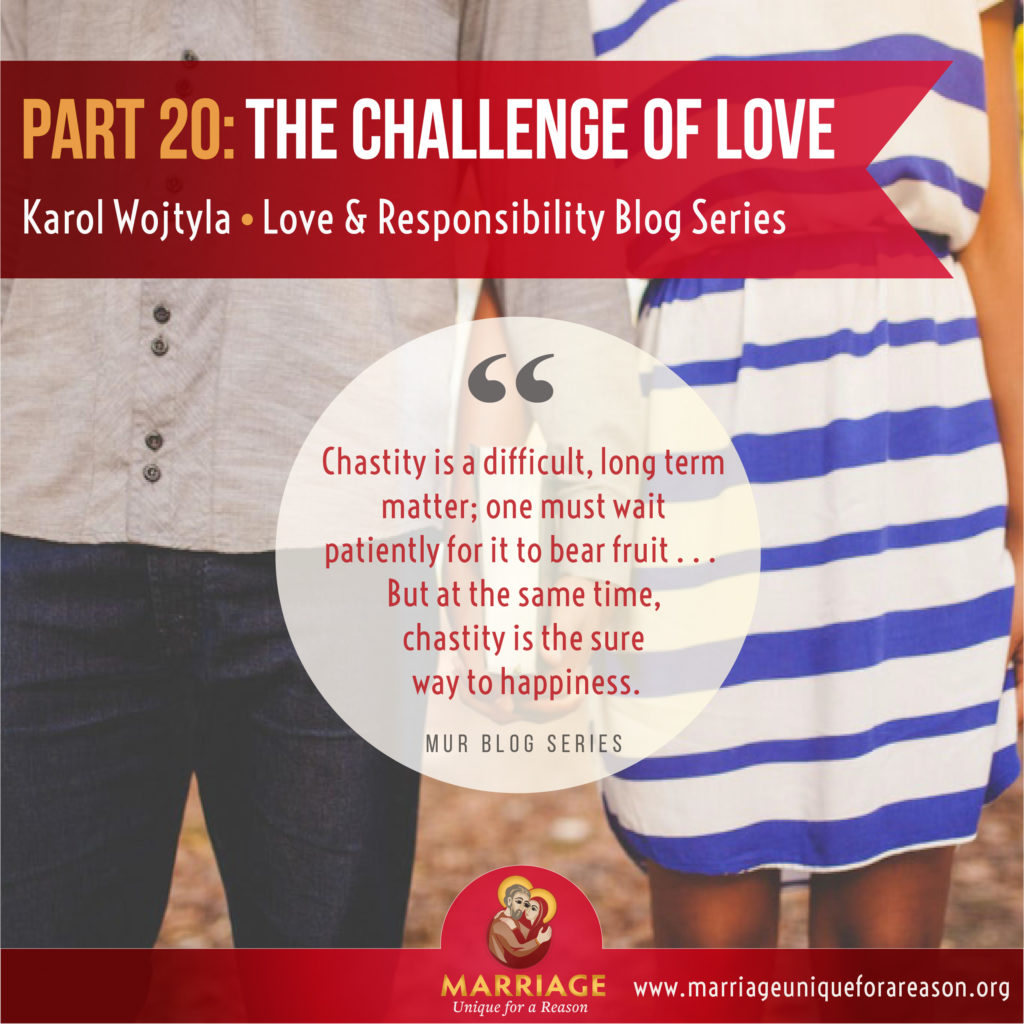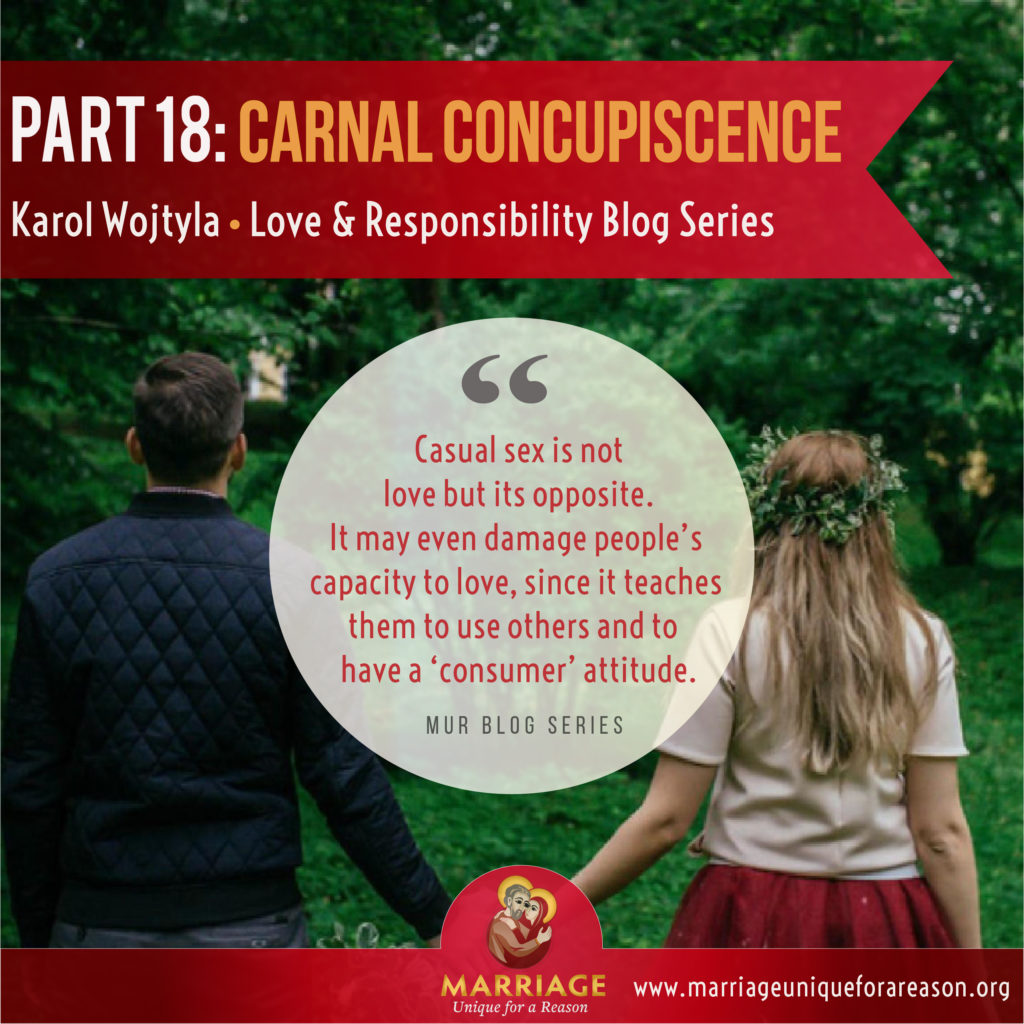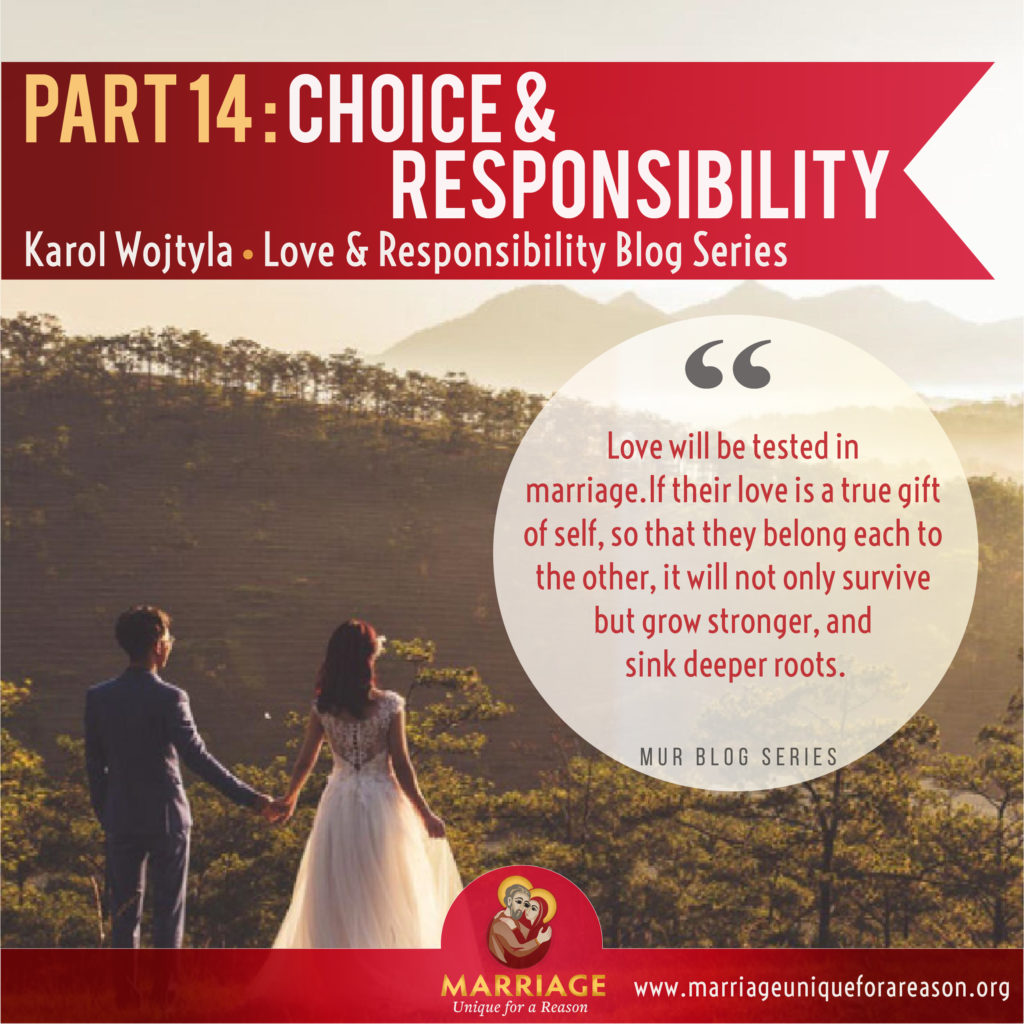Made for Love Ep 55: Remarriage after Death
When Catholics marry, they promise to be together “as long as we both shall live.” Death brings about the end of a marriage, and the other partner is free to marry again. Today we’ll hear the stories of men and women who have married after losing their first spouse to death. The episode features Randy and Lucy Hines and Andy and Beth Huseman.
On Podbean:
Or Soundcloud:
Archive
Made for Love Ep 30: The Dating Podcast: Stories
This episode is full of stories from Catholics dating. Some are dating fails, some are successes.
Available on Podbean:
And Soundcloud:
Check out more from Jacqueline vonSchleppenbach in this article from Verily!
Archive
Review of The Dating Project
Review by Elizabeth Plaza, Office Assistant
Dr. Kerry Cronin is known by the students at Boston College as “the dating professor”. How did she earn this unique title? Each semester Dr. Cronin assigns the students of her class a task that is becoming increasingly challenging – she requires that they ask out and take somebody on a date. After a discussion with some of her students, Dr. Cronin realized that dating culture was disappearing amongst young adults. She saw that traditional dating was being replaced by hookup culture on college campuses across the country. To combat this trend, Cronin began requiring the students in her class to go on a date. By assigning the “dating project,” Dr. Cronin hoped her students would “experience the courage of stepping outside of the dominant social script of the hookup culture”.
The first few times that Dr. Cronin assigned this project, she had very few guidelines. After receiving feedback from her students and seeing that they needed some guidance, Cronin created some criteria for a date to satisfy the requirements of the project. First, the student must ask out someone on a date in person. They cannot hide behind their screens – a trap which so many young people fall into. Additionally, both parties must know that it is a date. This may seem like an obvious parameter; however, in the world of “hooking up” many people do not know the intent of the other person with whom they are engaging in physical acts. Dr. Cronin also stipulates that if “you ask, you pay”. This is not too much of a financial burden, however, because she also tells students that a level one date (where two people spend time just getting to know one other) should cost no more than $10. She states that the date should only last between 60 and 90 minutes. Also, the students are told that they should refrain from all physical contact, except for “a-frame hugging”. The last rule laid out by Dr. Cronin is that there can be no drugs or alcohol involved in the date – something that she admits can be hard for college students.
The Dating Project, produced by Steve McEveety (producer of Passion of Christ), follows two freshmen in Dr. Cronin’s class, Matt and Shanzi, as they complete this assignment. The film opens with a montage of young people struggling to define dating. As suggested by Dr. Cronin, it seems like the knowledge of this practice has gotten lost in translation as it was handed down from generation to generation. Young people need a refresher of what they are worthy of and what dating is supposed to be. The film also traces the romantic lives of three other single people, two women and one man, ages 25-40. From navigating dating apps to living out one’s faith in a relationship, The Dating Project invites viewers along as the men and women tackle the challenges of dating in the modern world
The film is an uplifting reminder that it is okay, and sometimes necessary, to step outside of the dominant culture. Dr. Cronin’s gentle yet sage wisdom scaffolds the film and guides the narrative as the stories of the 3 single adults unfold. The reassuring “where are they now” end to the documentary-style film provides a glimmer of hope and a testimony for authentic love. Cecilia, a 25-year-old woman who had not found success on Tinder, shares that she is now happily engaged after thinking she would never find love. Rasheeda, a TV producer and church volunteer in her 30’s who had claimed to be too busy for love, started dating a man from her parish. Christopher, an actor in his 40’s who had struggled to maintain long-term relationships, discussed how he needed to make some changes in how he approached dating before he could be successful. The Dating Project is a film filled with inspiring examples of young people going against the grain of the less-than-productive modern model of dating. It offers many take-aways for a wide audience and advice that every young person deserves to hear.
Archive
Made for Love Ep 29: The Dating Podcast: Healthy Habits
How can Catholics approach dating in a healthy way? Who should do the initiating? How do you break up with someone nicely? This episode includes Dr. Kerry Cronin, the professor from Boston College who is featured in the film, The Dating Project, Dr. Paul Gondreau from Providence College, and USCCB staff members.
On podbean:
And Soundcloud:
Archive
Made for Love Ep 28: The Dating Podcast: Young Adults
The Dating Podcast: Young Adults
There’s a lot of secular evidence that there isn’t a great dating culture in America right now. What about dating as a Catholic? Today we’re talking with Dr. Kerry Cronin, the professor from Boston College who is featured in the film, The Dating Project, Dr. Paul Gondreau from Providence College, and LMFLY interns Kelly Walsh and Elizabeth Plaza.
On Podbean:
And Soundcloud:
In the first week of January, we will post a review of the movie The Dating Project by Elizabeth Plaza. Stay tuned!
Archive
The True Meaning of Chastity: Love and Responsibility (Post #21)
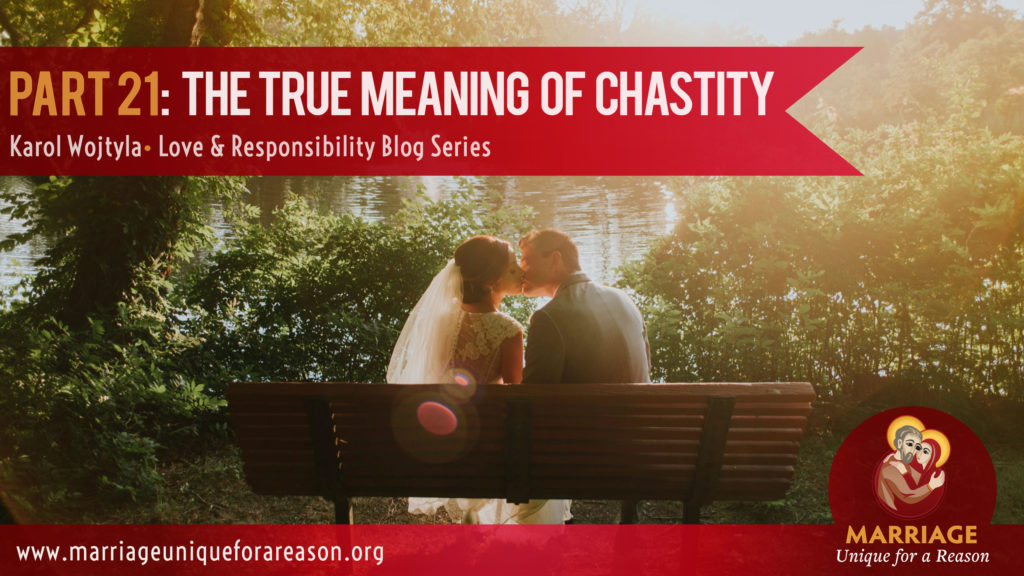 Note bene: This blog post includes a quote from the newer translation by Grzegorz Ignatik of Love and Responsibility—this translation is more readable and may be in some ways more faithful to the original, but the blog post author is most familiar with the H.T. Willets translation and that is why it has been used more!
Note bene: This blog post includes a quote from the newer translation by Grzegorz Ignatik of Love and Responsibility—this translation is more readable and may be in some ways more faithful to the original, but the blog post author is most familiar with the H.T. Willets translation and that is why it has been used more!
Chastity as Virtue:
Where does chastity fit in the general pursuit of virtue? This is what Wojtyla seeks to answer in this section of Love and Responsibility. Aquinas places chastity under the cardinal virtue of temperance[1], or moderation, by which reason moderates physical drives (for food, drink, and 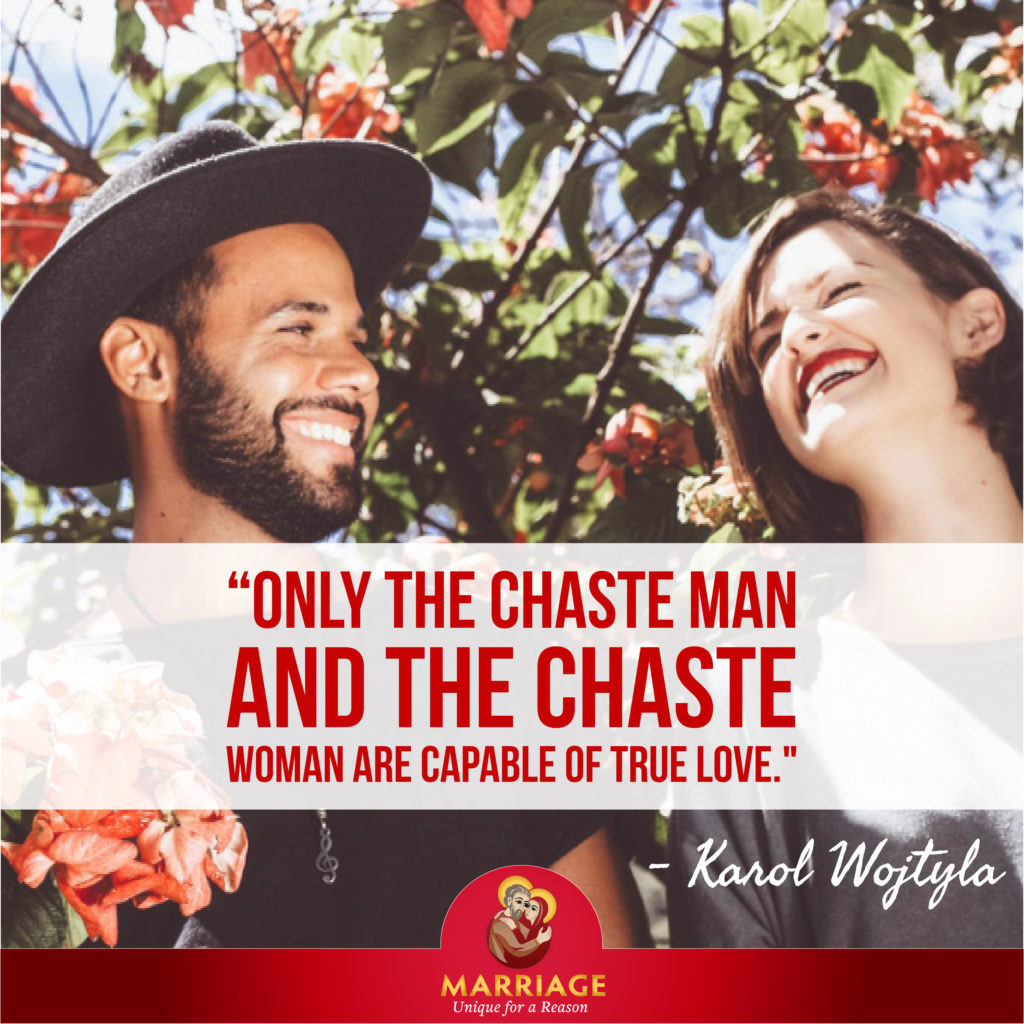 sex). Thus for Aquinas, chastity, as a sub-virtue of moderation, is having control over one’s sensual desire, such that the person is in a more or less permanent state of control (in the will).
sex). Thus for Aquinas, chastity, as a sub-virtue of moderation, is having control over one’s sensual desire, such that the person is in a more or less permanent state of control (in the will).
Wojtyla asks, is that really the best way to think about chastity? As self-control? No, he argues, “There is no way to comprehend chastity without the virtue of love.”[i] The virtue of chastity cannot only consist in control over one’s impulses, but rather control of “those centres deep within the human being in which the utilitarian attitude is hatched and grows.”[ii] This is much harder, and much easier, than acquiring chastity as moderation. It’s harder because looking at yourself honestly and working to root out self-centeredness and a tendency to use others is the work of a lifetime. And yet, once you engage in this deeper work you are much less likely to fall into particular sins related to lust or emotional manipulation. A virtue makes doing what is right easy and joyful. It becomes “co-natural” and it is no longer a real question or temptation because the will is solidly grounded in the understanding of the value of the person.
Consider pornography, for example. There will always be external temptations to view pornography, but the man or woman who has internalized and gained the virtue of chastity does not experience these temptations in the same way that 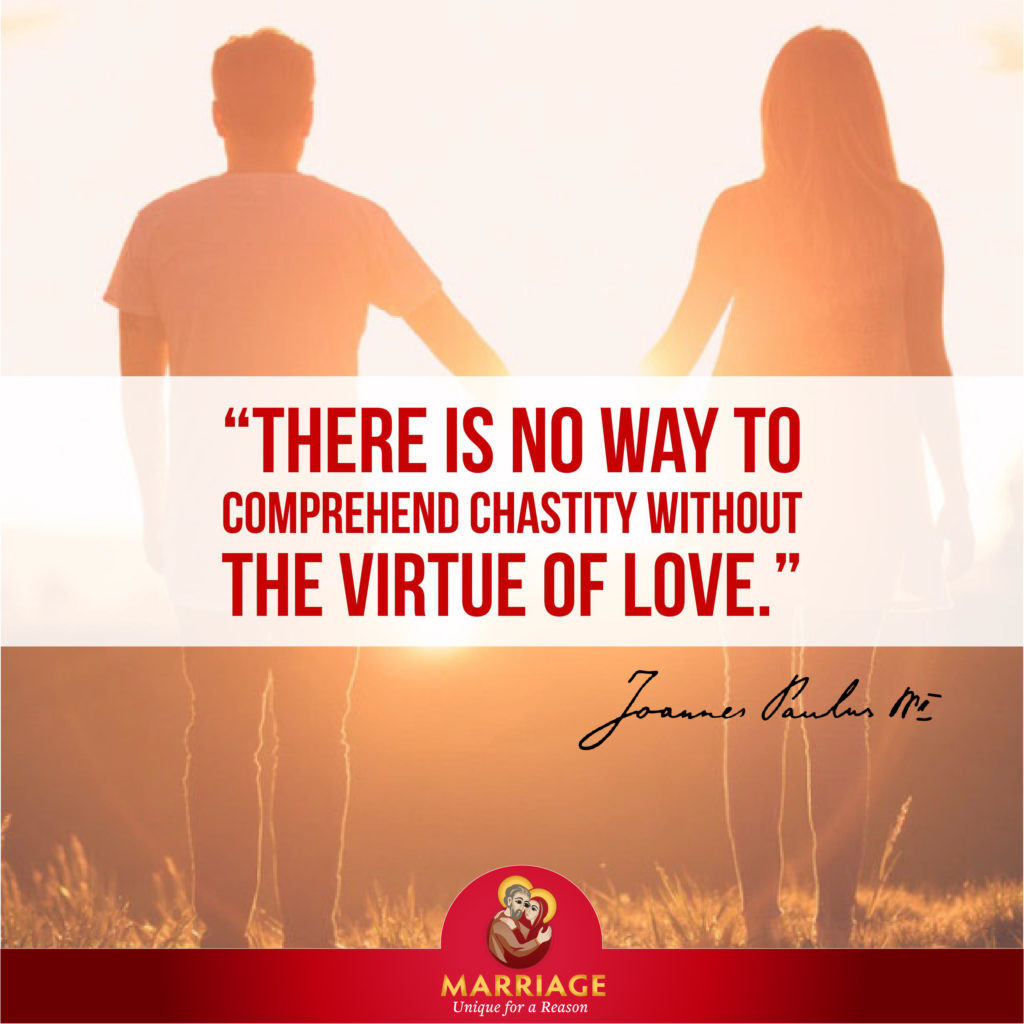 someone who does not have the virtue does. He or she knows in their mind that pornography degrades a human being, and has chosen with his or her will, over and over again, to reject it, such that pornography loses much of its power.[2]
someone who does not have the virtue does. He or she knows in their mind that pornography degrades a human being, and has chosen with his or her will, over and over again, to reject it, such that pornography loses much of its power.[2]
The Goodness of the Whole Person:
“To be chaste,” Wojtyla writes, “means to have a ‘transparent’ attitude to a person of the other sex… the desire to ‘enjoy’ is subordinated to a readiness to show loving kindness in every situation.”[iii] Wojtyla reiterates that chastity does not mean “artificially banishing the values of the ‘body’ or more generally the values of sex to the subconscious, of pretending that they do not exist or at any rate have no effect.”[iv] That is not a good idea. As Wojtyla notes, this false idea of chastity lends itself to “explosions” of sexual desire after repression.[v] Such repression happens when one sees chastity only as a negative virtue (a “no”), “whereas it is above all the ‘yes’ of which certain ‘no’s’ are the consequence.”[vi] Chastity’s essence is 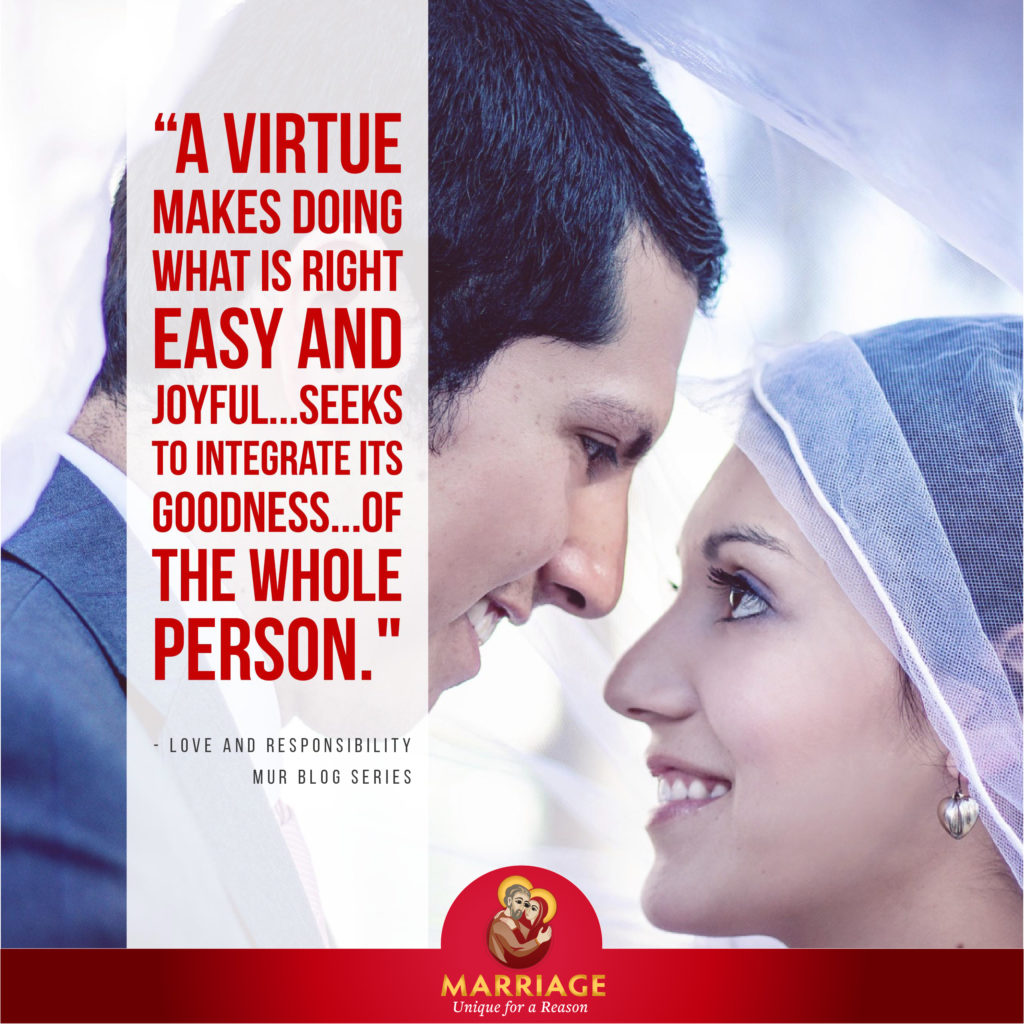 “quickness to affirm the value of the person in every situation and in raising to the personal level all reactions to the value of ‘the body and sex.’”[vii] It doesn’t push down the value of the body and sex, trying to smother it, but rather seeks to integrate its goodness into the knowledge of the goodness of the whole person. As Wendy Shalit wrote about modesty (a sub-virtue of chastity) in A Return to Modesty:
“quickness to affirm the value of the person in every situation and in raising to the personal level all reactions to the value of ‘the body and sex.’”[vii] It doesn’t push down the value of the body and sex, trying to smother it, but rather seeks to integrate its goodness into the knowledge of the goodness of the whole person. As Wendy Shalit wrote about modesty (a sub-virtue of chastity) in A Return to Modesty:
“Whether she decides to have scores of men or none, promiscuous
and prudish women in some sense embrace the same flippant world view,
which one might call the nothing-fazes-me world view. As types, they rep-
resent two sides of the same unerotic coin, which flips over arrogantly and
announces to the world when it lands, “Ha!—I cannot be moved.” Modesty
is prudery’s true opposite, because it admits that one can be moved and
issues a specific invitation for one man to try.”[viii]
If sexual reactions were always bad or undesirable, how could marriage be considered good or holy? “True chastity does not lead to disdain for the body or to disparagement of matrimony and the sexual life,”[ix] Wojytla writes. “That is the result of false chastity, chastity with a tinge of hypocrisy, or, still more frequently, of unchastity.”[x] A person who has not integrated their sexual reactions into a deeper affirmation of the person will see all sexual reactions as ‘dirty.’ “Thus only the chaste man and the chaste woman are capable of true love.”[xi] Chastity frees a couple from using each other and gives them the ability to love in their marital 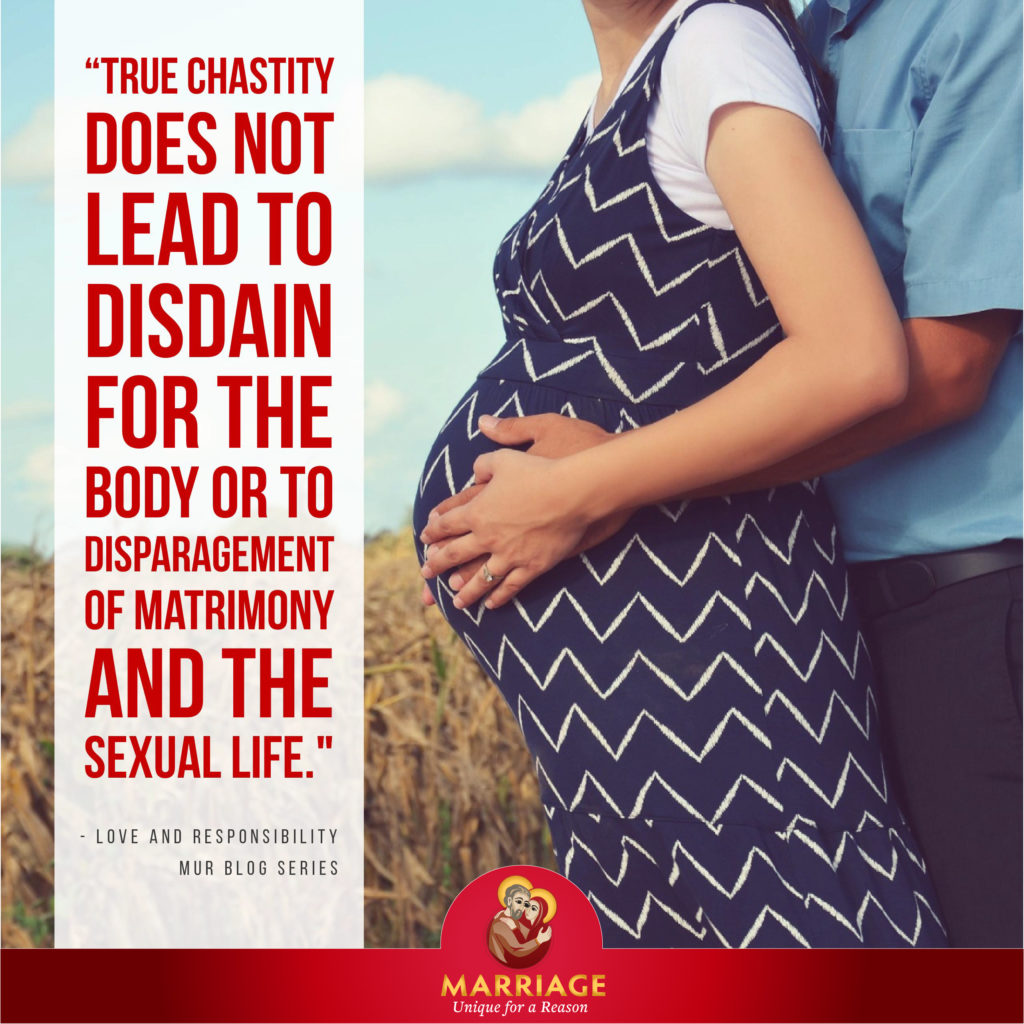 sexual relationship.[xii] This requires maturity of many kinds, since concupiscence remains. “For this reason, chastity is a difficult, long term matter; one must wait patiently for it to bear fruit.”[xiii]
sexual relationship.[xii] This requires maturity of many kinds, since concupiscence remains. “For this reason, chastity is a difficult, long term matter; one must wait patiently for it to bear fruit.”[xiii]
Finally, Wojytla writes about the “humility of the body,” which he asserts is necessary for love.[xiv] “The human body must ‘humble itself’ in face of the magnitude represented by love… subordinate itself [to love].”[xv] Instead of the person striving to satisfy the body’s desires, the chaste person basically says to the body, “Not so fast! This is a person, and he/she is a child of God, destined for heaven.” Thus the body is subordinated to the ultimate happiness of the person. For, “Blessed are the pure in heart, for they shall see God” (Mt. 5:8).
[1] If you need a little refresher, the cardinal virtues are the four “big” virtues, under which other virtues fall. They are prudence, temperance, justice, and fortitude.
[2] This is one of the reasons that early exposure to pornography is so harmful to the person—it snatches away, if you will, the innocent period of time when a child sees everyone as a human person first and only later as a sexual body, and makes it that much harder to develop chastity and a proper view of the human person.
[i] Karol Wojtyla. Love and Responsibility (Boston: Pauline Books and Media, 2013), p. 154.
[ii] Wojtyla, Karol. Love and Responsibility (San Francisco: Ignatius Press, 1993), p. 170.
[iii] Ibid, p. 170.
[iv] Ibid, p. 170.
[v] Ibid, p. 170.
[vi] Ibid, p. 170.
[vii] Ibid, p. 171.
[viii] Wendy Shalit. A Return to Modesty (New York: Touchstone, 1999), p. 182.
[ix] Ibid, p. 171.
[x] Ibid, p. 171.
[xi] Ibid, p. 171.
[xii] Ibid, p. 171.
[xiii] Ibid, p. 172.
[xiv] Ibid, p. 172.
[xv] Ibid, p. 172.
Archive
The Challenge of Love: Love and Responsibility Series (Post #20)
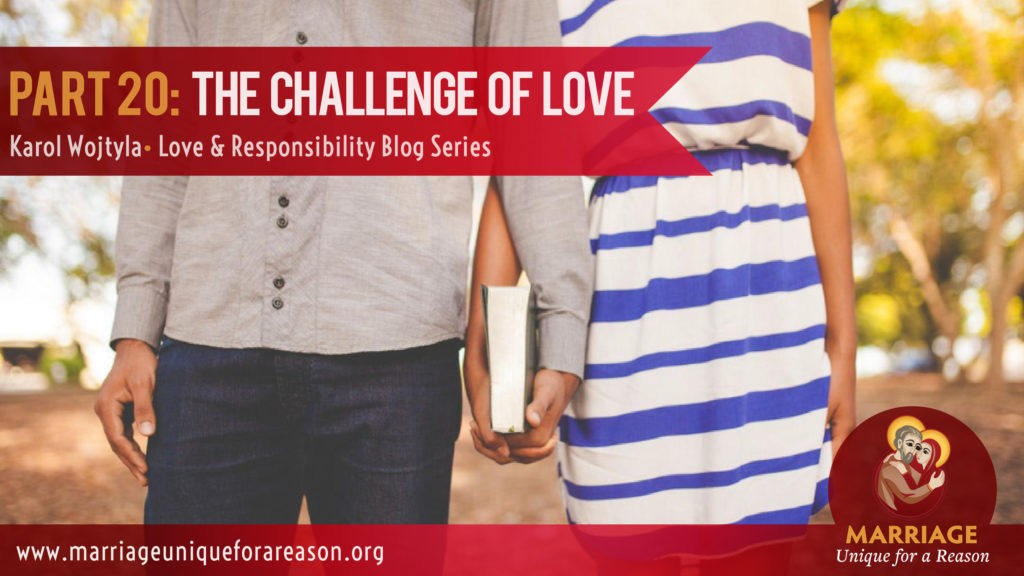 Integration of Love:
Integration of Love:
In this section of Love and Responsibility, Wojtyla analyzes what concupiscence is and what it’s not. It’s not a sin, but it is a challenge to the growth of mature love between a man and a woman. “Concupiscence is a consistent tendency to see persons of the other sex through the prism of sexuality alone, as ‘objects of potential enjoyment.’”[1] 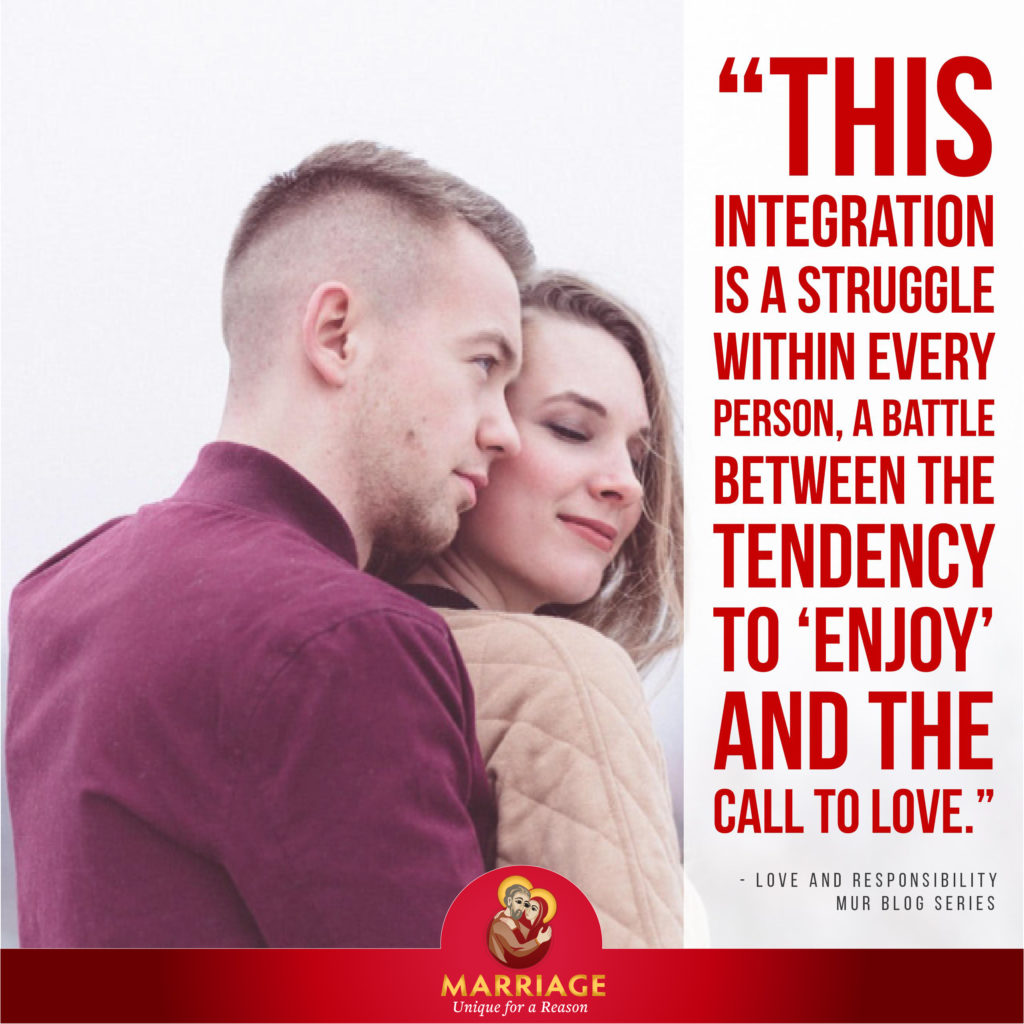 Wojtyla points out that overcoming this tendency does not mean becoming “a-sexual” or “blind to the value of ‘the body and sex,’” but rather that it is integrated into love of the person, the whole person, which includes his or her body.[2] (There’s a sweet song about this kind of integration called “You Wouldn’t Mind” by Colleen Nixon.)
Wojtyla points out that overcoming this tendency does not mean becoming “a-sexual” or “blind to the value of ‘the body and sex,’” but rather that it is integrated into love of the person, the whole person, which includes his or her body.[2] (There’s a sweet song about this kind of integration called “You Wouldn’t Mind” by Colleen Nixon.)
Wojtyla writes that this integration is a struggle within every person, a battle between the tendency to “enjoy” and the call to love. He emphasizes again that concupiscence is only the “germ of sin,” not sin itself, since it is not a choice.[3] Our reactions toward one another are “muddied” because of original sin, so that “it is not altogether safe to put one’s trust in the reactions of the senses” or emotions.[4] That is hard! We want to just relax and go with our desires and feelings, but that’s not always a good plan.
Concupiscence vs. Lust:
Wojtyla points out that because of original sin, human beings tend to desire others sexually even if they don’t “love” them at all—concupiscence pushes people in that direction. Therefore, for concupiscence to become lust, “passive acquiescence suffices.”[5] In other words, if one does not actively guard against lust (the sin), one will most likely lose the battle. Concupiscence will win. At the same time, one shouldn’t mistake concupiscence for the sin of lust. It’s the will that determines whether we sin or not. “As soon as the will consents,” Wojtyla writes, the desire becomes something that the person is “actively doing” rather than something that is “happening to” him or her.[6]
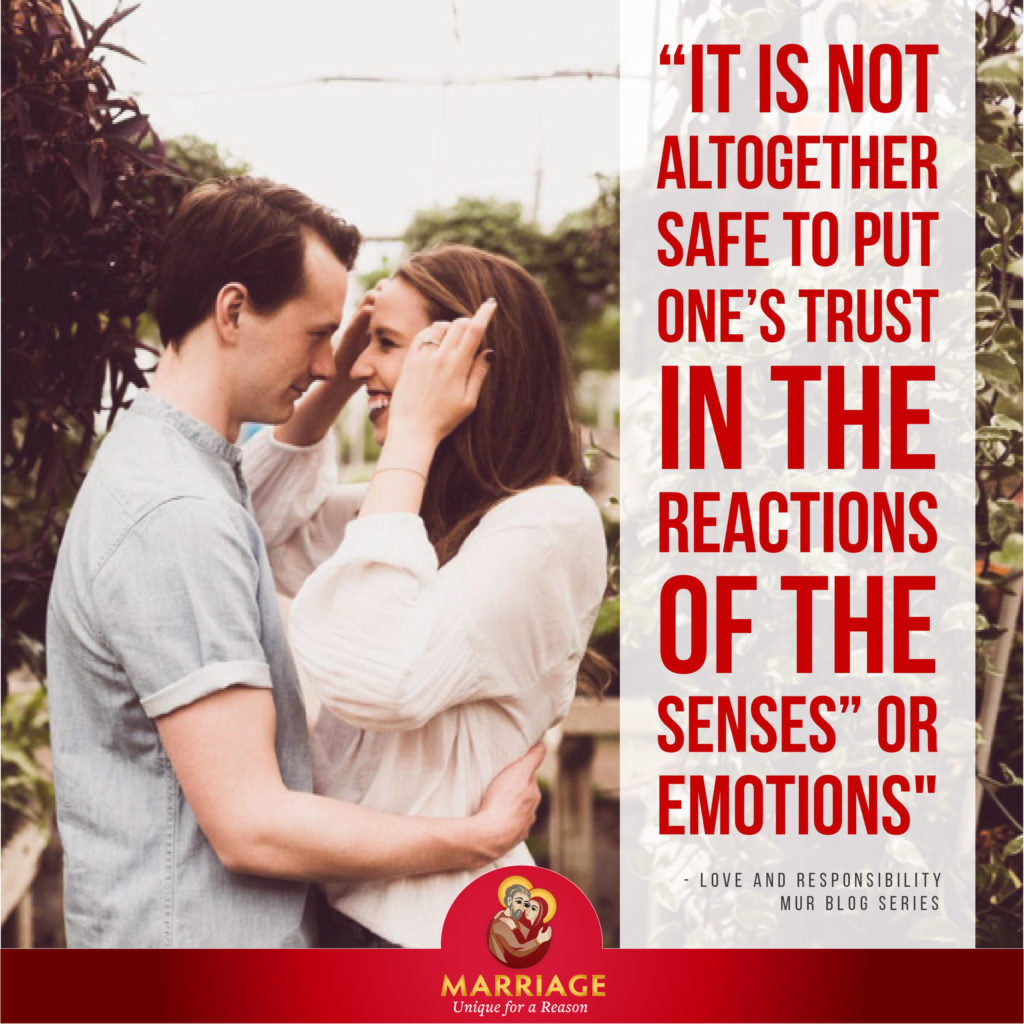 Some people (perhaps all!) have a hard time finding that boundary between what is just happening in them and what they are choosing. Wojtyla says that since concupiscence pushes the human being toward lust, the person may mistake this push for the choice. But just because a person feels something doesn’t mean they will or choose it. In fact, “an act of the will directed against a sensual impulse does not generally produce any immediate result… [the sexual reaction] generally runs its full course even if it meets emphatic opposition in the sphere of the will.”[7] If you didn’t choose it, it’s not a sin.
Some people (perhaps all!) have a hard time finding that boundary between what is just happening in them and what they are choosing. Wojtyla says that since concupiscence pushes the human being toward lust, the person may mistake this push for the choice. But just because a person feels something doesn’t mean they will or choose it. In fact, “an act of the will directed against a sensual impulse does not generally produce any immediate result… [the sexual reaction] generally runs its full course even if it meets emphatic opposition in the sphere of the will.”[7] If you didn’t choose it, it’s not a sin.
So far in this section, Wojtyla has been focused on sensual reactions, but now he turns to emotions. He reiterates that love cannot be reduced to emotion and that sin comes when “the will puts emotion before the person.”[8] He notes that, “Authenticity of feeling is quite often inimical to truth in behavior.”[9] In the footnote to this statement, Wojtyla notes that one should treat one’s feelings, “with a certain distrust,” noting that often, someone’s being “true to their feelings” is used to justify bad actions, like leaving one’s spouse for another.[10] “The particular danger of ‘sinful love’ [lust] consists in a fiction: immediately, and before reflection, it is not felt to be ‘sinful,’ but is, above all, felt to be love… it makes the sin more dangerous.”[11]
Lust is dangerous because it is not experienced as what it is: wrong, a sin. The persons justify it by a false idea of love as emotion. Instead, the will must “demand of reason a correct vision of love and of the happiness which love can bring to a woman and a man.”[12] It is the will that guards the person against a “sinful love” and if the will guards one person, it simultaneously protects the other.
[1] Wojtyla, Karol. Love and Responsibility (San Francisco: Ignatius Press, 1993), p. 159.
[2] Ibid, p. 159.
[3] Ibid, p. 160.
[4] Ibid, p. 161.
[5] Ibid, p. 161.
[6] Ibid, p. 162.
[7] Ibid, p. 162.
[8] Ibid, p. 163.
[9] Ibid, p. 163.
[10] Ibid, p. 302.
[11] Ibid, p. 165.
[12] Ibid, p. 166.
Archive
Carnal Concupiscence: Love and Responsibility Series (Post #18)
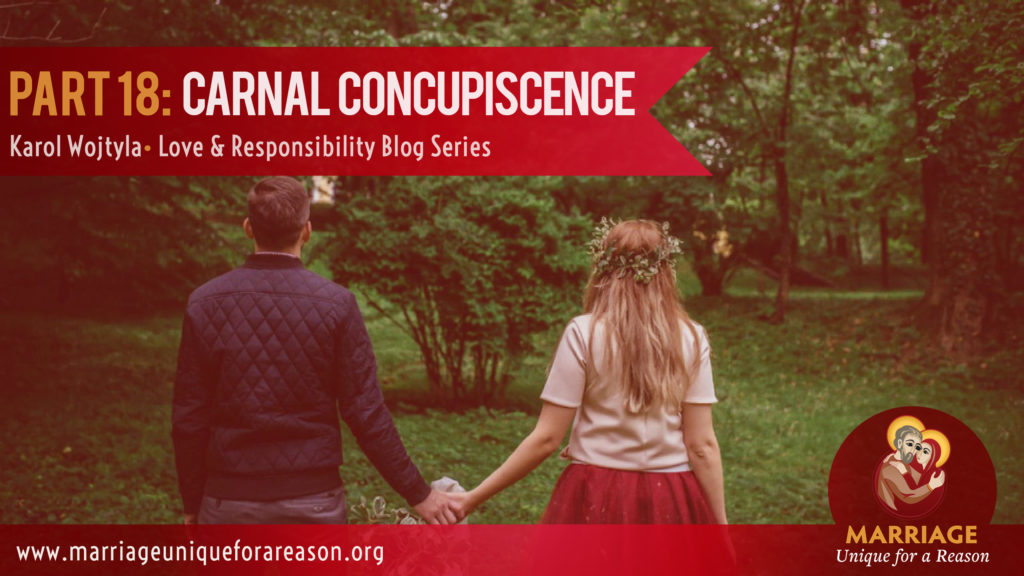
What is Carnal Concupiscence?
Wojtyla begins this section on carnal concupiscence (Definition: the tendency toward sin in the area of sexuality) in Love and Responsibility by noting that, in the relationship between man and woman, the subject of an action is a person of one sex and the object is the other sex, and “only love blurs this relationship,”[i]—i.e. the two persons see each other as “another self,” and therefore not a totally separate individuals. Even if the two persons really do feel like a “we,” a joint, single subject, “This feeling, however, does nothing to alter the objective fact that they are in reality two different 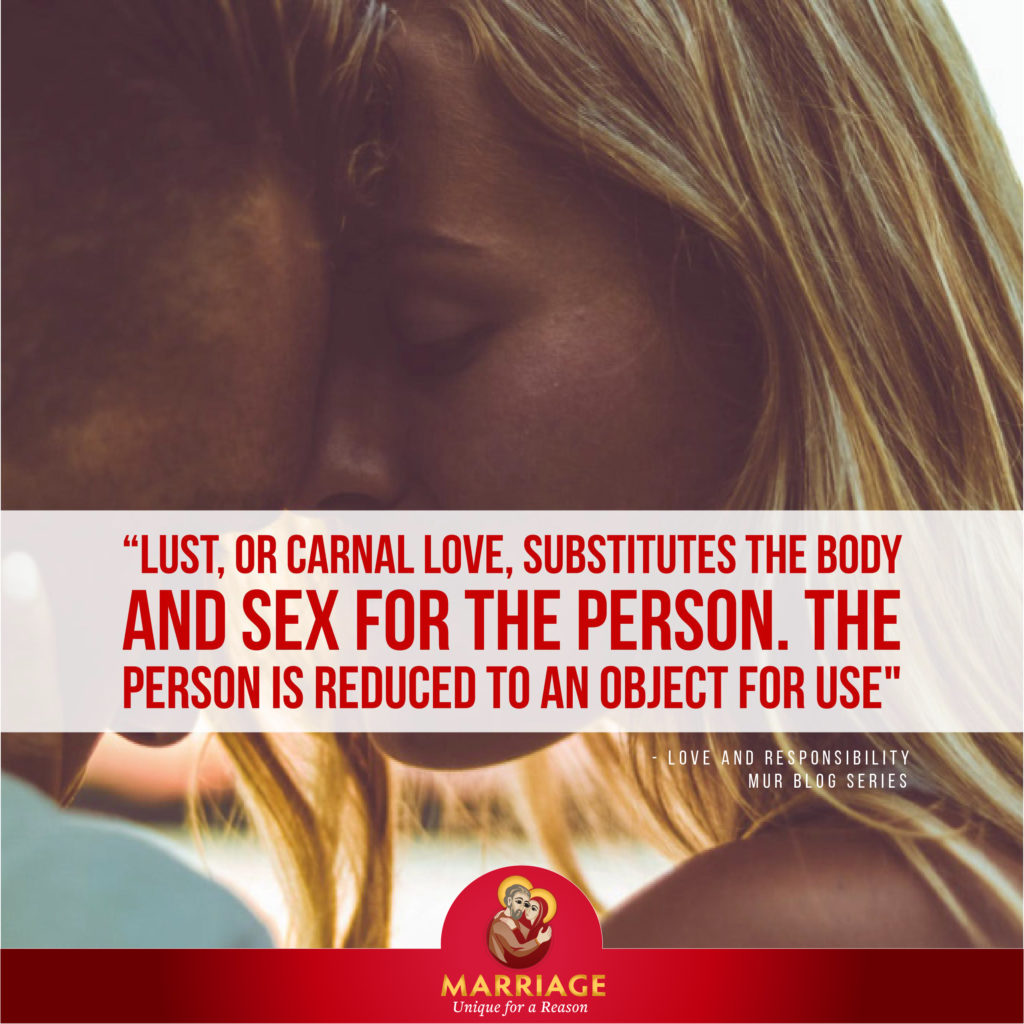 beings and two different subjects of action,”[ii] Wojtyla writes. Often the actions of each person affect the other in a way that is more intense than in friendship or other more casual relationships. Wojtyla uses the word “actions” here to include thoughts and feelings which are “internal actions” only known to the person him- or herself.
beings and two different subjects of action,”[ii] Wojtyla writes. Often the actions of each person affect the other in a way that is more intense than in friendship or other more casual relationships. Wojtyla uses the word “actions” here to include thoughts and feelings which are “internal actions” only known to the person him- or herself.
Wojtyla turns to the Ten Commandments, pointing out that the two Commandments that have to do specifically with the relationship of the sexes cover both external actions (“Thou shalt not commit adultery”) and internal actions (“Thou shalt not covet thy neighbor’s wife”). In both cases, the object of the action is a person of the other sex. Carnal concupiscence, Wojtyla writes, is closely related to sensuality but it is not the same. Sensuality is the first reaction to a body of the other sex, as a possible “object of enjoyment,” but this reaction is not a sin. Concupiscence, like lust, is in the second movement—the movement of the will—to actively seek enjoyment out of the other person. The “obvious ease”[iii] by which a person moves from a reaction to this choice “is the source of great tensions in the inner life of the person,”[iv] Wojtyla writes.
Does Sex always = Love?
Sensuality easily turns into concupiscence or lust; the body’s reaction pushes the person in that direction. Wojtyla turns here to the famous philosopher and theologian St. Thomas Aquinas, who distinguishes these two movements of the soul as desire and the urge to act. Our feelings tend toward one or the other (thirst is an example of desire, anger of an urge to act). When sexual desire, focused solely on a body, is taken into the will and embraced, that is lust. The lustful person seeks bodily pleasure without regard to the 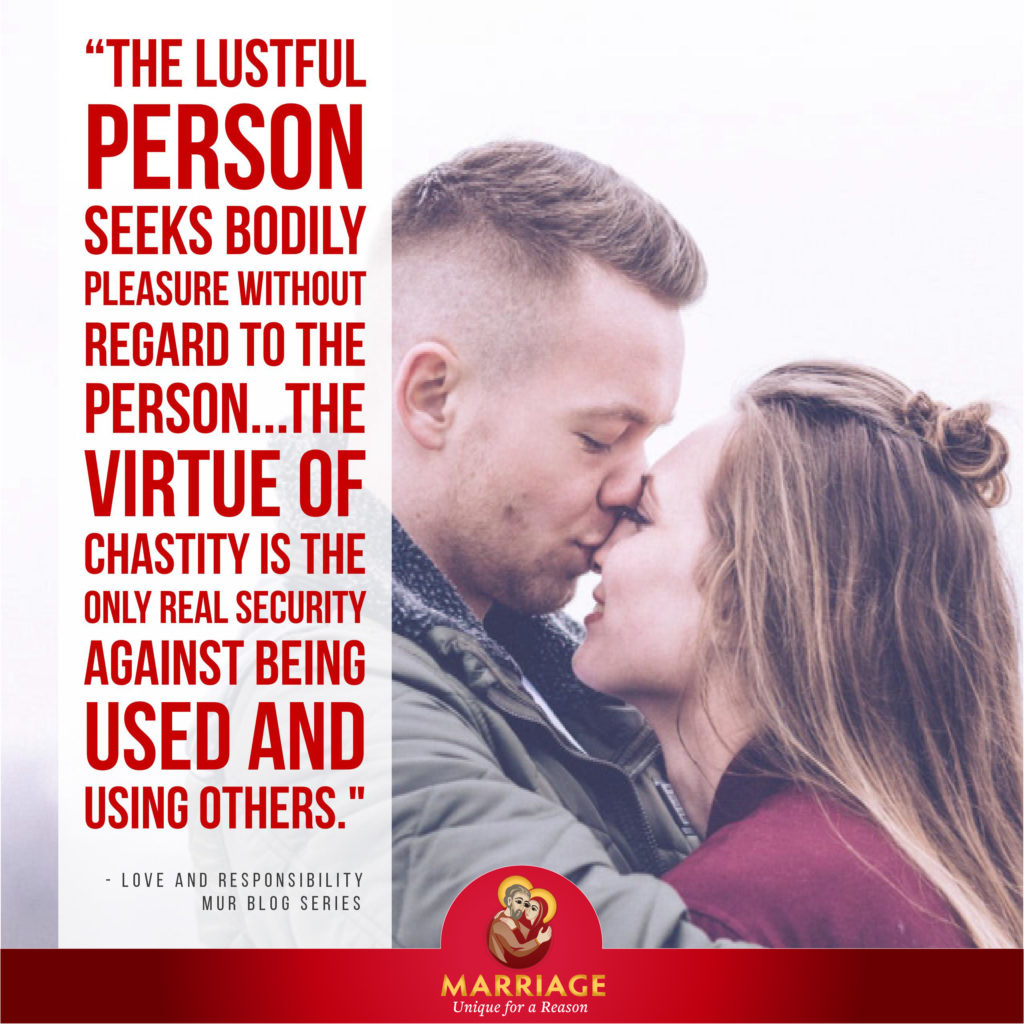 person. In such a case, as soon as this person achieves the bodily release that he or she craves, his or her attitude toward the other person changes completely. Consider one night stands as one clear way that this plays out in people’s lives. If Harry and Sally meet at a bar and “hook up,” it’s likely that Harry and Sally will look at each other very differently the next morning (or even just a short time later). “Sensuality is ‘expended’ in concupiscence,”[v] Wojtyla writes. If bodily desires are the only thing bringing two people together, and those desires are satisfied (at least temporarily) by the sexual act, then the two persons no longer have any reason to be together afterwards. This is normal in the animal world but a serious moral problem for human beings.
person. In such a case, as soon as this person achieves the bodily release that he or she craves, his or her attitude toward the other person changes completely. Consider one night stands as one clear way that this plays out in people’s lives. If Harry and Sally meet at a bar and “hook up,” it’s likely that Harry and Sally will look at each other very differently the next morning (or even just a short time later). “Sensuality is ‘expended’ in concupiscence,”[v] Wojtyla writes. If bodily desires are the only thing bringing two people together, and those desires are satisfied (at least temporarily) by the sexual act, then the two persons no longer have any reason to be together afterwards. This is normal in the animal world but a serious moral problem for human beings.
Lust, or carnal love, substitutes the body and sex for the person. The person is reduced to an object for use. The persons may feel love because of it— they may experience a powerful feeling of closeness and intimacy that comes from the release of hormones during sex—but this is a trick of nature. Lust drives people to have sex but it does not unite them as persons. Casual sex is not love but its opposite. It may even damage people’s capacity to love, since it teaches them to use others, to have a “consumer” attitude; to use and discard another human being.
Wojtyla notes that emotion (sentimentality) can act as one safeguard against carnal concupiscence or lust but it is not enough—the virtue of chastity is the only real security against being used and using others.
[i] Wojtyla, Karol. Love and Responsibility (San Francisco: Ignatius Press, 1993), p. 147.
[ii] Ibid, p. 147.
[iii] Ibid, p. 148.
[iv] Ibid, p. 148.
[v] Ibid, p. 149.
Archive
Choice and Responsibility: Love and Responsibility Series (Post #14)
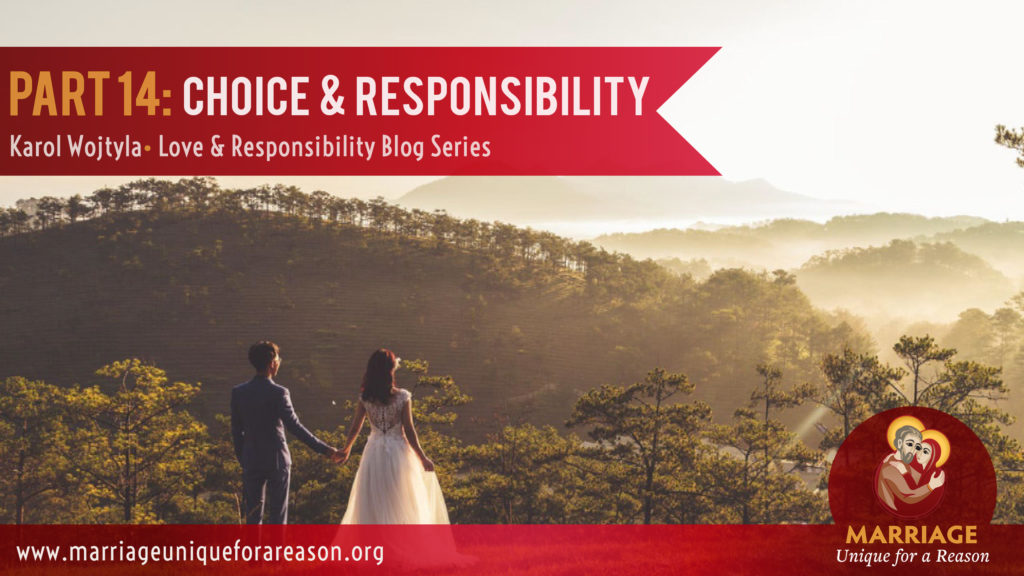
A Responsibility for One’s Own Love:
This part of Love and Responsibility is perhaps the crux of Wojtyla’s argument in the book—“Choice and Responsibility.” A human person has a “responsibility for one’s own love,” he says, and this responsibility is “immense.”[1] It is only recognized as such by someone who understands the value and worth of the human person—a person is a child of God, worth the blood of God’s Son! A person who knows this will be careful about how he or she approaches relationships. Wojtyla notes that a man (or a woman) who does not understand the worth and dignity of others, “will 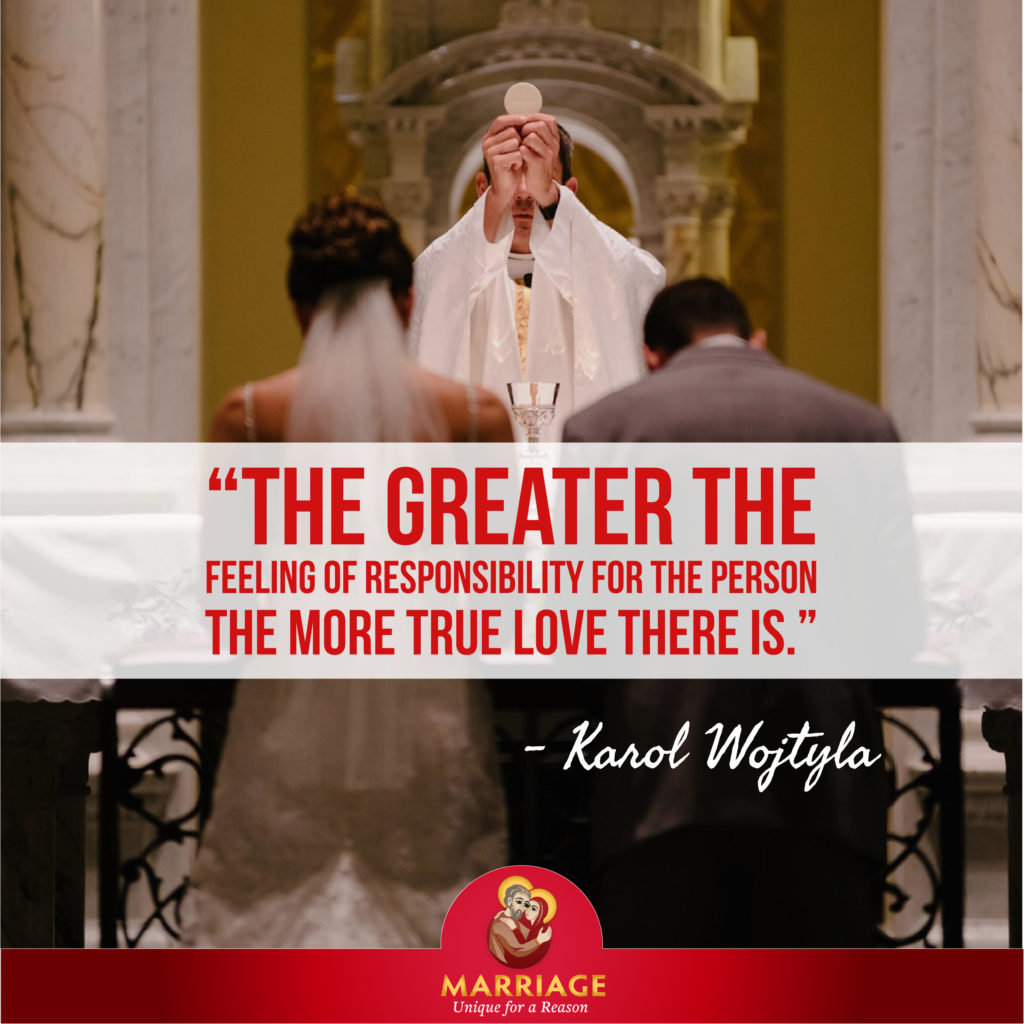 complicate his own life and that of others by letting the reality of love, its true ‘relish,’ escape him.”[2] Someone who never sees the deeper reality of what love is, is bound to hurt other people.
complicate his own life and that of others by letting the reality of love, its true ‘relish,’ escape him.”[2] Someone who never sees the deeper reality of what love is, is bound to hurt other people.
When I read the above, I think of my friend Sally’s[*] father. He left her and her mom when Sally was three; remarried and divorced again when Sally was in elementary school; remarried and divorced again when she was in college… to say that this man “complicated his own life and that of others” is perhaps an understatement. Sally was hurt by every one of those changes and reasonably questions whether marriage can ever be permanent, whether she ever wants to be married. Her father never seemed to care about the effects of his choices on his daughter. He is an example, to me, of a person who does not feel responsibility for other people. Wojtyla says, “The greater the feeling of responsibility for the person the more true love there is.”[3]
Relationships Involve Choices:
Relationships involve choices. Before a man and a woman can pledge their love to one another, “each face the choice of the person on whom to bestow the gift of self. Its consequences makes the choice a weighty matter.”[4] Marriage is (obviously) not a decision to be taken lightly. Dating and engagement ought to be a time of discernment, asking and then verifying that one’s choice of spouse is the right one. Choosing one’s partner in marriage, “is as though one were choosing another ‘I,’ 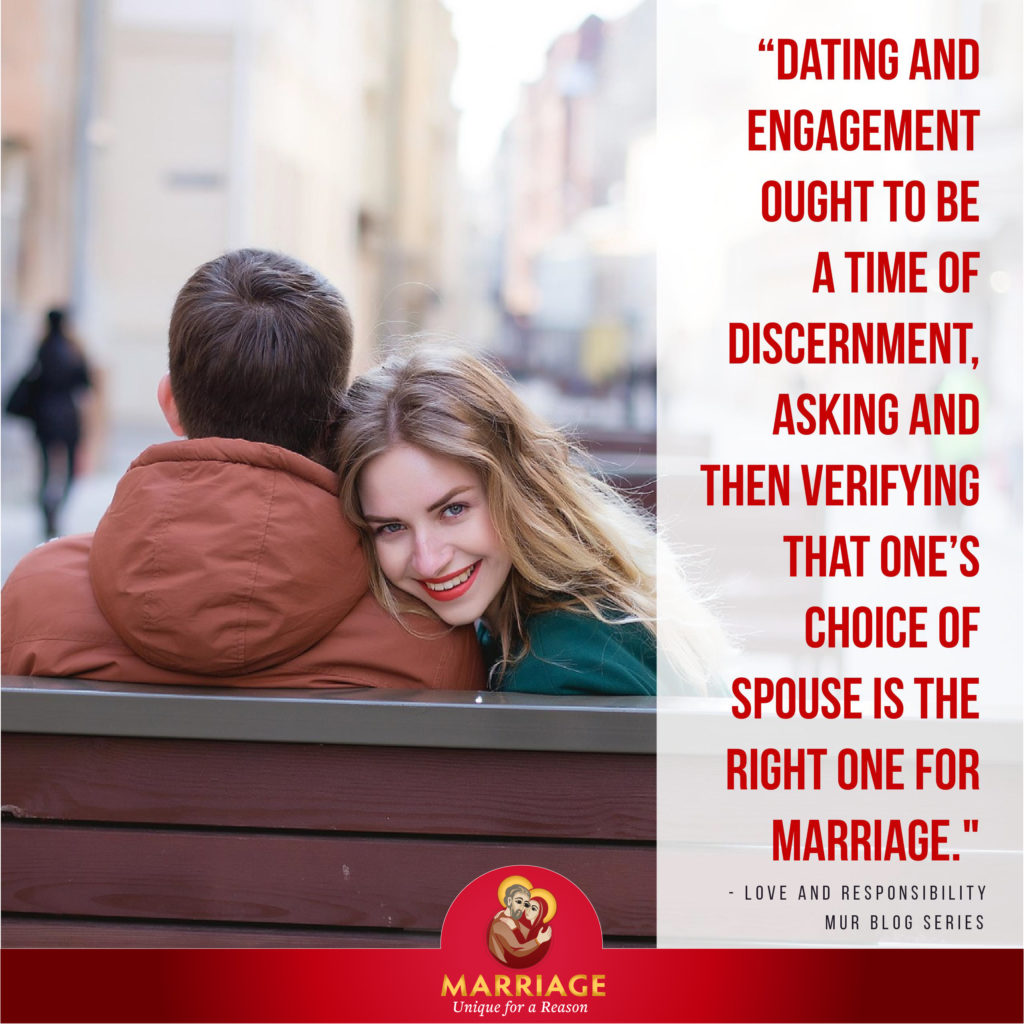 choosing oneself in another, and the other in oneself… in order not merely to live with another but to live by and for that other person, he must continually discover himself in the other and the other in himself.”[5] One’s spouse must be like another self.
choosing oneself in another, and the other in oneself… in order not merely to live with another but to live by and for that other person, he must continually discover himself in the other and the other in himself.”[5] One’s spouse must be like another self.
No one can really explain why one person chooses another, Wojtyla notes. Certainly sexual attraction plays a part, but only the choice of this person (not this body) can be considered valid for marriage. “True love is one in which we choose the person for the sake of the person,”[6] not for the sake of having sex, having children, or in order not to be alone. Whether one has chosen wisely will be discovered as time goes by. “Life will determine the value of a choice and the value and true magnitude of love.”[7]
Love and Marriage:
Love will be tested in marriage. Sexual interest may fade and fatigue set in; two people who once vowed to be all to one another may feel like strangers. “Nothing then remains except the value of the person, and the inner truth about the love of those concerned comes to light,” Wojtyla writes. “If their love is a true gift of self, so that they belong each to the other, it will not only survive but grow stronger, and sink deeper roots… only when love between human beings is put to the test can its true value be seen.”[8] If life was always easy, we would not really find out how real our love is.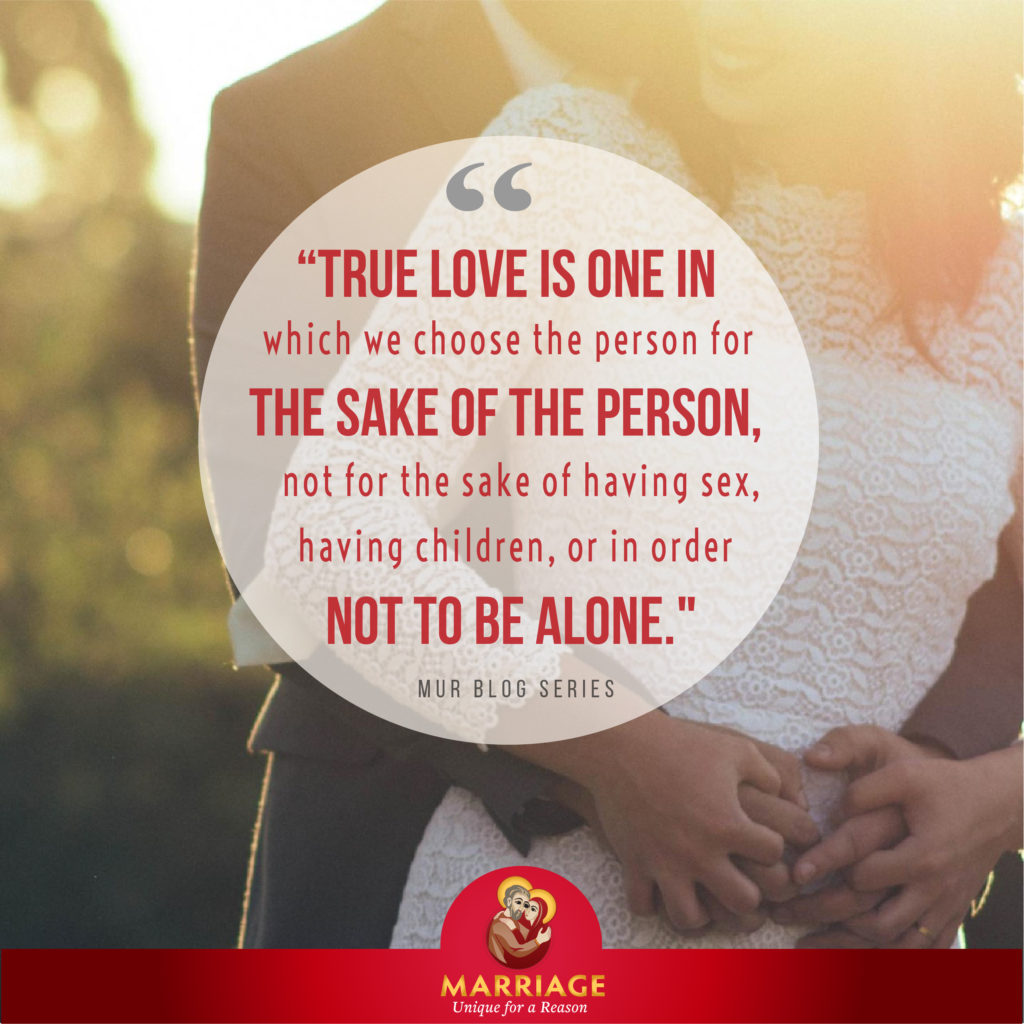
I see an elderly couple at Mass sometimes; the woman is in a wheelchair and she cannot speak. Her husband appears to take such good care of her, pulling her up to the front of the church, fixing her cardigan so that she won’t get cold, and smiling at people who come up to greet them. That is what true love looks like; it’s not easy, but it’s beautiful.
While emotions and desires change and fluctuate, a love which has matured within the subject frees itself from this anxiety by its choice of person.”[9] True love, based on the value of the person, “makes us feel emotional love for the person as he or she really is, not for the person of our imagination, but for the real person.”[10] At a certain level, this love is not dependent on the person’s virtues and lives on in spite of his or her faults. The strength of love shows itself most when the loved one fails in some way (makes mistakes, even sins). “One who truly loves does not then withdraw his love, but loves all the more, loves in full consciousness of the other’s shortcomings and faults, and without in the least approving of them. For the person as such never loses its essential value.”[11]
More on how this choice happens next time!
You can read ALL of MUR’s Love and Responsibility blog series in the link below: http://www.marriageuniqueforareason.org/category/love-and-responsibility/
[*] Not her real name.
[1] Wojtyla, Karol. Love and Responsibility (San Francisco: Ignatius Press, 1993), p. 130.
[2] Ibid, p. 130.
[3] Ibid, p. 131.
[4] Ibid, p. 131.
[5] Ibid, p. 131.
[6] Ibid, p. 134.
[7] Ibid, p. 134.
[8] Ibid, p. 134.
[9] Ibid, p. 134.
[10] Ibid, p. 135.
[11] Ibid, p. 135.
